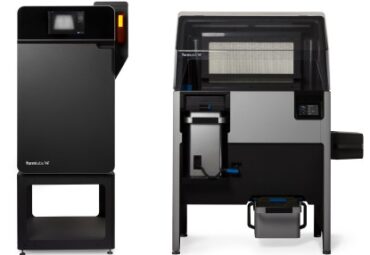How to post-process 3D prints with DEMI 800™ Series machine, a PostProcess® proprietary patented Submersed Vortex Cavitation technology for revolutionary post-printing efficiencies? Learn more about DEMI’s software, hardware, and chemistry features for optimal resin and support removal. PostProcess’ SVC technology utilizes agitated flow to effectively remove PolyJet and FDM supports with a ‘sink-float’ process to rotate parts throughout the chamber. This variable motion, combined with optimal energy delivery and detergent filtration, results in fast and uniform removal.
DEMI 800 Series integrates a number of design features for ease of use and integration into your 3D printing operations, like noise reduction for a low dBa, a powerful magnetically driven pump, and advanced filters for extended detergent life. A fully insulated tank to keep the temperature consistent for energy efficiency, a basket to remove parts from the system and harness at the top of the unit, and ergonomically friendly tank orientation are just a few of the uniquely engineered features.
